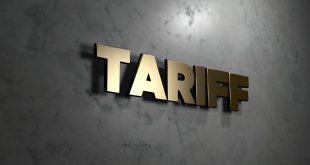The Federal Reserve’s impending interest rate cut is a complex event with far-reaching implications for investors and consumers alike. While it may offer some short-term relief, it also introduces a host of uncertainties and potential risks.
A Cautious Pivot
The Fed’s decision to ease monetary policy reflects a cautious approach to navigating a delicate economic landscape. After a period of aggressive rate hikes aimed at curbing inflation, the central bank is now shifting gears to support economic growth. However, this pivot is fraught with challenges, as policymakers must balance the need to stimulate the economy with the risk of reigniting inflationary pressures.
Impact on Consumer Borrowing Costs
For consumers, a rate cut can translate into lower borrowing costs across various products. Credit card interest rates, which are often tied to the Fed’s benchmark rate, may decline, albeit with a lag. This could provide some relief to consumers carrying credit card debt.
However, the impact on mortgage rates is less certain. While a rate cut can indirectly influence mortgage rates, the primary driver remains Treasury yields and broader economic conditions. Fixed-rate mortgage holders will not immediately benefit from a rate cut, as their rates are locked in.
Auto loan rates, which are typically fixed, will not be directly affected by the Fed’s decision. However, for new borrowers, lower interest rates could make auto financing more affordable.
Federal student loan rates are fixed, so a rate cut will not have a direct impact. However, private student loan rates, which can be variable, may decline as a result of the Fed’s action.
Implications for Investors
For investors, the Fed’s rate cut presents a mixed bag of opportunities and risks. Lower interest rates can boost corporate earnings and drive stock prices higher, particularly for companies with high growth potential. However, it can also lead to increased market volatility and uncertainty.
Bond investors may benefit from rising bond prices as interest rates decline. However, as the economy recovers, bond yields may rise, leading to potential capital losses. A weaker dollar, which may result from a rate cut, can benefit U.S. exporters but may also lead to higher import costs.
Navigating the Uncertain Future
As the Fed navigates this complex economic terrain, investors and consumers must remain vigilant and adapt to changing market conditions. A diversified investment strategy, coupled with a long-term perspective, can help mitigate risks and capitalize on opportunities.
It is always crucial to consult with financial advisors to assess individual financial situations and make informed decisions. While a rate cut may offer some short-term benefits, it is essential to consider the broader economic implications and potential risks before making any significant financial moves.

 Noor Trends News, Technical Analysis, Educational Tools and Recommendations
Noor Trends News, Technical Analysis, Educational Tools and Recommendations




